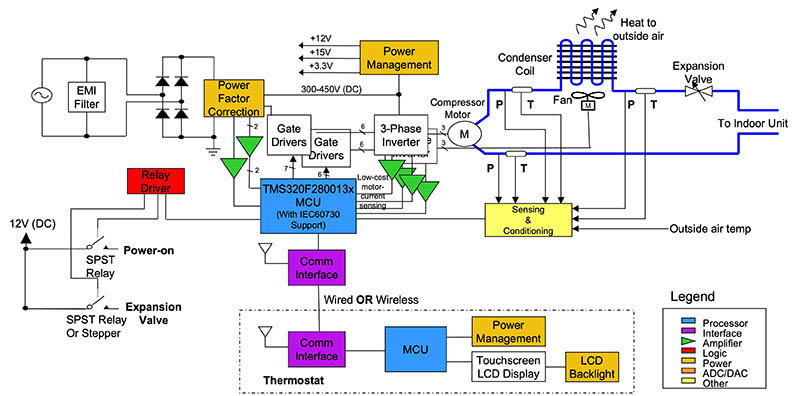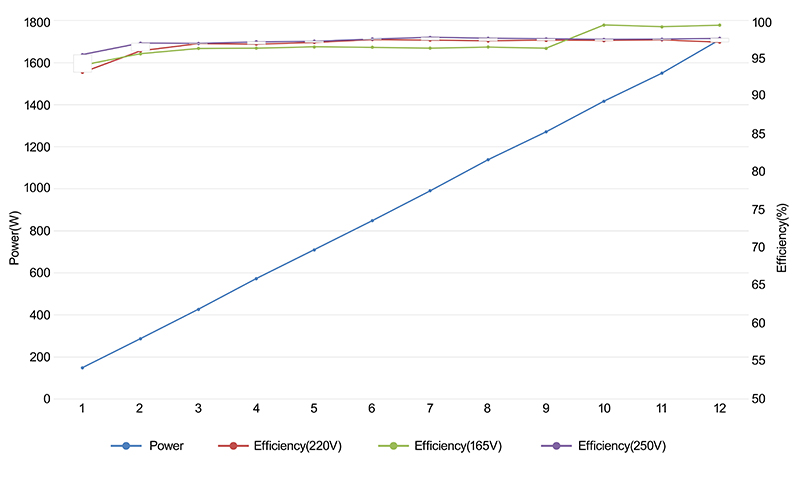SSZT053 october 2022 TMS320F2800137 , TMS320F2800157 , TMS320F2800157-Q1
Increasingly, businesses and individuals are looking for ways to reduce their energy footprint and increase the use of renewable sources. Where should we focus to make the biggest impact?
Over 65% of global electricity is used to power electric motors and power supplies in industrial settings, commercial buildings, and personal homes. According to Our World in Data, 60% is obtained from burning coal and natural gas, with a scant 10% from renewables. Intelligent variable-frequency digital motor control can slash energy consumption by over 25%. Intelligent digital power control can maximize the efficiency of solar and wind energy production and minimize the power supply consumption from the highest energy consumers. In this article, I’ll look at some of the trends for intelligent control applications and examples of how intelligent control can reduce energy consumption and increase the efficiency of renewable energy.
Intelligent Motor Control
Air conditioners (Figure 1) are major power consumers from the electricity grid. While specific energy-efficiency standards vary by region, all designs require the implementation of advanced motor control and power factor correction (PFC) algorithms to achieve target ratings and meet power factor specifications.
Controlling each motor (compressor, cooling fan) in an air conditioner might require a control loop operating with a frequency as high as 20 kHz. PFC, on the other hand, typically requires an operating frequency as high as 50 kHz. Thus, to reliably implement multiple high frequency control loops, the microcontroller (MCU) must be able to process computations quickly and efficiently, with little latency.
 Figure 1 Block diagram of an
air-conditioning system
Figure 1 Block diagram of an
air-conditioning systemAn MCU for air-conditioning systems requires multiple analog-to-digital (ADC) and pulse-width modulation (PWM) channels, with the flexibility to synchronize to switching events and independently sample and control each of the two inverters and the PFC circuit. Analog comparators and PWM glitch elimination are necessary for power electronics protection.
For International Electrotechnical Commission 60730 requirements, an MCU for air conditioners will also offer clock protection, including two on-chip oscillators with better than 1% accuracy, as well as watchdogs and clock-fail detection circuitry.
The Dual Motor Control With Digital Interleaved PFC for Air Conditioner Reference Design provides a hardware and software example of a single 64-pin C2000™ TMS320F2800137 MCU controlling the compressor and fan motors with >97% efficiency, with a digital interleaved 72 kHz boost PFC stage offering >96% power efficiency (Figure 2), and many popular system and communication functions.
 Figure 2 Power efficiency of the PFC
converter in the air conditioner reference design
Figure 2 Power efficiency of the PFC
converter in the air conditioner reference designConsuming as little as 40 KB of flash and 30% of the central processing unit (CPU) is possible thanks to the optimization of the C2000 real-time MCU architecture, designed to reduce the latency between sensing (the ADC), processing (the CPU) and control (the PWM). Based on TI benchmarks, an Arm® Cortex®-M7F based MCU would need to run at 240MHz to deliver the same overall performance as our 120-MHz device.
This same reference design is scalable to single-motor and motor-plus-PFC applications, with smaller TMS320F2800137 series 48 or 32-pin packages and 64 KB to 256 KB of on-chip non-volatile flash memory options. It is possible to use the same tactics to increase motor efficiency on residential air conditioning systems to nearly all motors used in variable-speed, variable-load systems, from low-voltage battery operated devices up to the highest-power consuming AC drives for industrial applications.
Intelligent Digital Power
For digital power, the goals are to create renewable energy more efficiently and to convert and use energy most efficiently. For example, in the solar market, there is a trend to move from centralized high-power solar inverters to distributed low-power solar systems such as micro-inverters and power optimizers. These micro-inverters and power optimizers are typically installed one per several solar panels, which produces lower energy losses and higher efficiency in complex sunlight conditions. When adding more of these module level power electronics in a solar system, the real-time MCUs need to be low cost but still powerful enough to perform maximum power-point tracking for each solar panel under their control.
Growing energy utilization across the world requires efficient, compact and stable power supplies. This requirement has created a challenge for designers of power-conversion systems to deliver power dense designs, yet still meet the efficiency and fast transient response needs for “high-performance small-enough” systems. Furthermore, a drive to digitize existing analog-based designs for more scalability has also given rise to the need for lower-cost, high-performance real-time MCU solutions.
New Real-time Control MCU Series
The latest addition to the C2000 real-time MCU portfolio, the TMS320F2800137 helps make real-time technology affordable and expands a long-term software-compatible platform offering low, mid, and high-level options for analog and digital designers. This new series enables engineers for motor control, grid infrastructure, and industrial power applications to create products that reduce our energy footprint and increase our ability to efficiently use renewable resources.